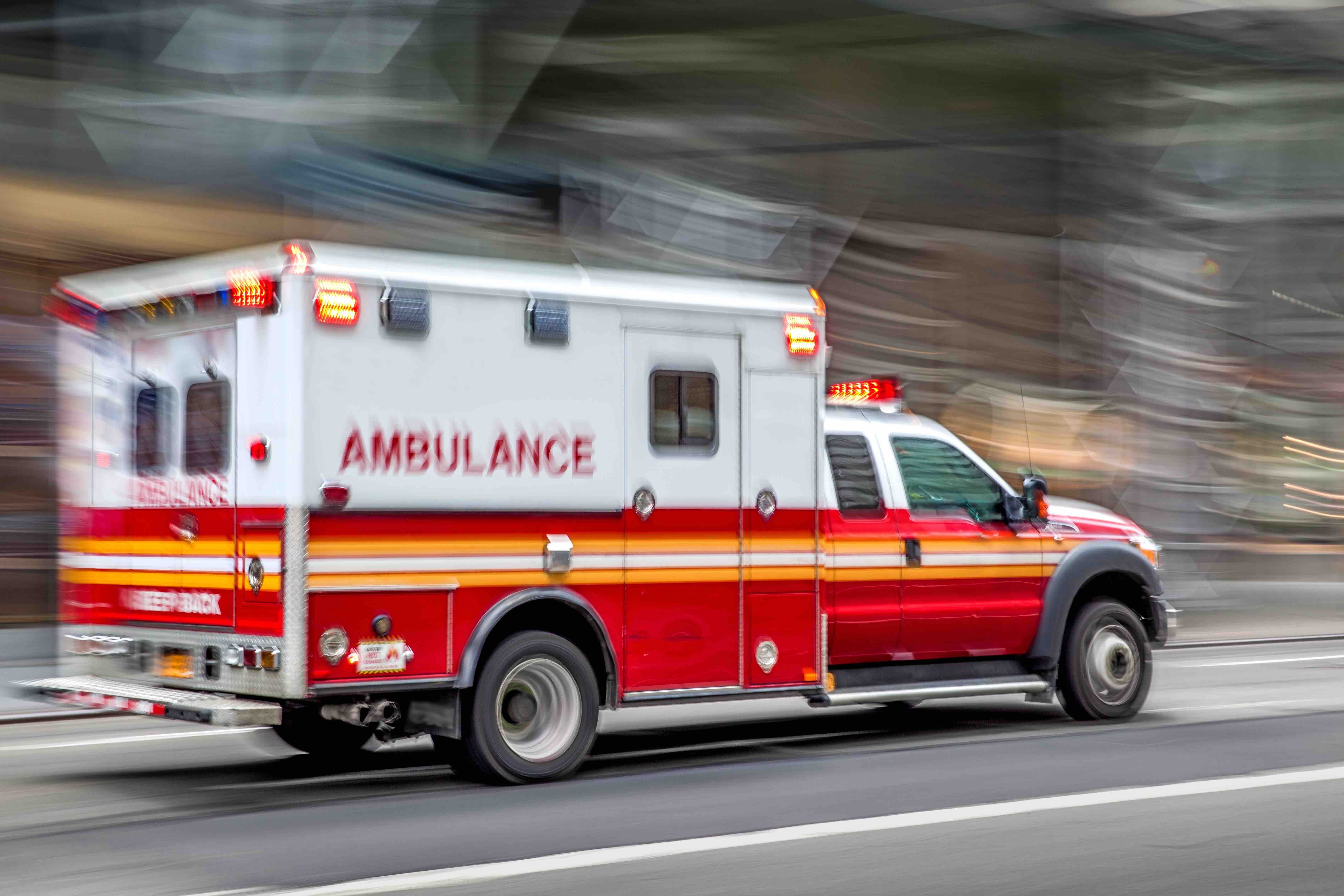- Center on Health Equity & Access
- Clinical
- Health Care Cost
- Health Care Delivery
- Insurance
- Policy
- Technology
- Value-Based Care
Early BP Reduction Shows No Benefit in Acute Stroke, but Outcomes May Vary by Stroke Type
A study found that prehospital blood pressure (BP) reduction had no impact on functional outcomes among patients with undifferentiated acute stroke, but that it may decrease the odds of poor outcomes following hemorrhagic stroke.
Early blood pressure (BP) reduction in stroke patients during ambulance transport may benefit those with hemorrhagic stroke but could worsen outcomes for those with ischemic stroke, according to findings from the INTERACT4 study (NCT03790800) recently published in the New England Journal of Medicine.1
"Treatment of acute stroke, before a distinction can be made between ischemic and hemorrhagic types, is challenging. Whether very early blood-pressure control in the ambulance improves outcomes among patients with undifferentiated acute stroke is uncertain," the authors wrote.
The study randomly assigned a total of 2404 patients with suspected acute stroke causing motor deficit and with elevated systolic blood pressure of at least 150 mm Hg to receive either immediate BP-lowering treatment with urapidil (n = 1205) or usual BP management (n = 1199) after being assessed in an ambulance within 2 hours of symptom onset. The target BP range in the intervention group was 130 to 140 mm Hg.
The primary aim of the INTERACT4 trial was to determine whether prehospital BP reduction could improve outcomes for stroke patients. The study was conducted at 51 hospitals in 2 regions of China.
Ambulance transporting patient to the hospital | Image credit: bluraz - stock.adobe.com

The median time between symptom onset and randomization was 61 minutes, with a mean BP of 178/98 mm Hg at randomization in the overall cohort. Diagnosis was later confirmed by imaging, with 46.5% having a hemorrhagic stroke and 53.5% with cerebral ischemia.
Overall functional outcomes at 90 days post stroke were the same for patients who had very early BP-lowering treatment and those who received usual care (common OR, 1.00; 95% CI, 0.87-1.15), and the rates of serious adverse events was similar in both groups. However, there were significant differences in outcomes between stroke types.
Patients with hemorrhagic strokes whose BP was lowered in the ambulance had significantly lower odds of poor functional outcomes (common OR, 0.75; 95% CI, 0.60-0.92), while patients with cerebral ischemia who received immediate BP-lowering treatment had increased odds of a poor functional outcomes (common OR, 1.30; 95% CI, 1.06-1.60).
The authors noted that 2 prior trials, RIGHT-2 and MR ASAP, tested the impact of prehospital transdermal glyceryl trinitrate to lower BP in patients with suspected acute stroke, and both trials failed to demonstrate benefits. The MR ASAP trial was terminated early due to a trend toward higher mortality in a subset of patients with an intercranial hemorrhage. The INTERACT4 trial was designed to answer questions about whether different antihypertensive agents would influence the results and whether there are differential effects based on stroke type.
In an editorial accompanying the paper, Jonathan A. Edlow, MD, of Beth Israel Deaconess Medical Center and Harvard Medical School, noted that “these findings should be hypothesis-generating, and they make the case for validation of the trial results in other settings.”2 He also suggested advances in treatment that could help, such as a mobile stroke unit with CT scanners on board.
“Ambulance-performed CT allows for the distinction to be made between hemorrhage and ischemia, which not only permits more-targeted blood-pressure management, but can also expedite decisions regarding anticoagulant reversal, thrombolysis, and hospital destination (eg, primary acute care vs comprehensive stroke center). Early treatments can have a large effect, but only if they are based on accurate early diagnosis,” Edlow wrote.
Several aspects of the INTERACT4 trial could potentially limit the findings' generalizability to other settings, the authors noted.1 First, urapidil, an α-1 receptor blocker, has different mechanisms of action from comparable antihypertension drugs and is not available in the United States. It’s also important to note that in the typical North American or European community, hemorrhages usually make up 20% of acute strokes, while the proportion was closer to 50% in this trial conducted in China.1,2
"In patients with acute stroke and elevated blood pressure, the rapid initiation of intensive blood-pressure reduction to reach a target systolic blood pressure of 130 to 140 mm Hg in the ambulance within 2 hours after symptom onset had no benefit with regard to functional outcome in patients with undifferentiated stroke as compared with the standard approach of initiating blood-pressure management after arrival at the hospital," the authors concluded. "However, the intervention may have had divergent effects for patients with hemorrhagic stroke and those with cerebral ischemia."
References
- Li G, Lin Y, Yang J, et al. Intensive ambulance-delivered blood-pressure reduction in hyperacute stroke. N Engl J Med. Published online May 16, 2024. doi:10.1056/NEJMoa2314741.
- Edlow JA. Lowering blood pressure in stroke patients in the ambulance - a bridge too close? N Engl J Med. Published online May 16, 2024. doi:10.1056/NEJMe2402356.
